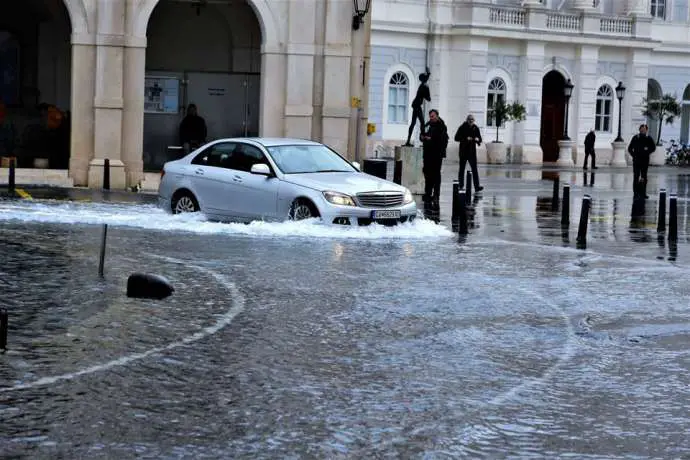STA, 10 January 2020 - The expected rise in sea level in the coming decades and high tide flooding could affect some 3,800 people living on the Slovenian coast, flooding some nature reserves out of existence, a study has found.
High tides have been increasingly flooding low-lying parts of the Slovenian coast and sea level has risen by 10 centimetres in the past 50 years or by 1.7 millimetres a year, shows the study, conducted by researchers of the geography department of the University of Primorska Faculty of Humanities.
The researchers, Gregor Kovačič and Valentina Brečko Grubar, note that in the past 20 years the rise in sea level in Slovenia has been higher even than European and global average.
Scientists on the Intergovernmental Panel on Climate Change estimate the global sea level could rise by up to 100 centimetres by 2100, but unlikely not by less than 50 centimetres.
Given a 50 centimetre rise in sea level, high tide floods would cover 700 hectares of the Slovenian coast with about 25 centimetres of water on the lowest sections of the coast.
This would mean extensive flooding of the salt pans in Strunjan and Sečovlje as important fauna and flora habitats and of some residential buildings in the town Piran.
During high tide, the water level would be comparable to that of extremely high tides or extreme floods today, with about 80 centimetres of water on low-lying parts of the coast, or even 144 centimetres in case of a exceptionally high tide.
If sea level was to rise by a metre and given an increased tide, 1,246 hectares of land would be under water, an area comparable to exceptional flooding today.
The built-up areas of low coast would be threatened such as those in the area of Koper port or Bonifika in Koper, the coastal sections of Izola, and part of the settlement of Strunjan.
Like today, Piran would be hit the hardest with large part of the old town under water. Some residential areas of Lucija would also be flooded and the entire Sečovelje salt pans.
Given such a rise in sea level, more than 800 buildings would be flooded, affecting about 3,800 residents, most of them in the Koper municipality.
The rise in sea level would cause extraordinary flooding every year and part of the low coast would be mostly under water. The flooded area would increase considerably when the tide was in.
Even if the land was dry when the tide was out, the soil would be inappropriate for farming because of the salt in it.
Conservation areas such as the Škocjanski Zatok, Sečoveljske Soline and Stjuža in Strunjan would be gone forever, the researchers warn.
They call for making out detailed mid- and long-term plans to adapt to the consequences of sea flooding, including by mapping out where certain human activities are no longer possible.






